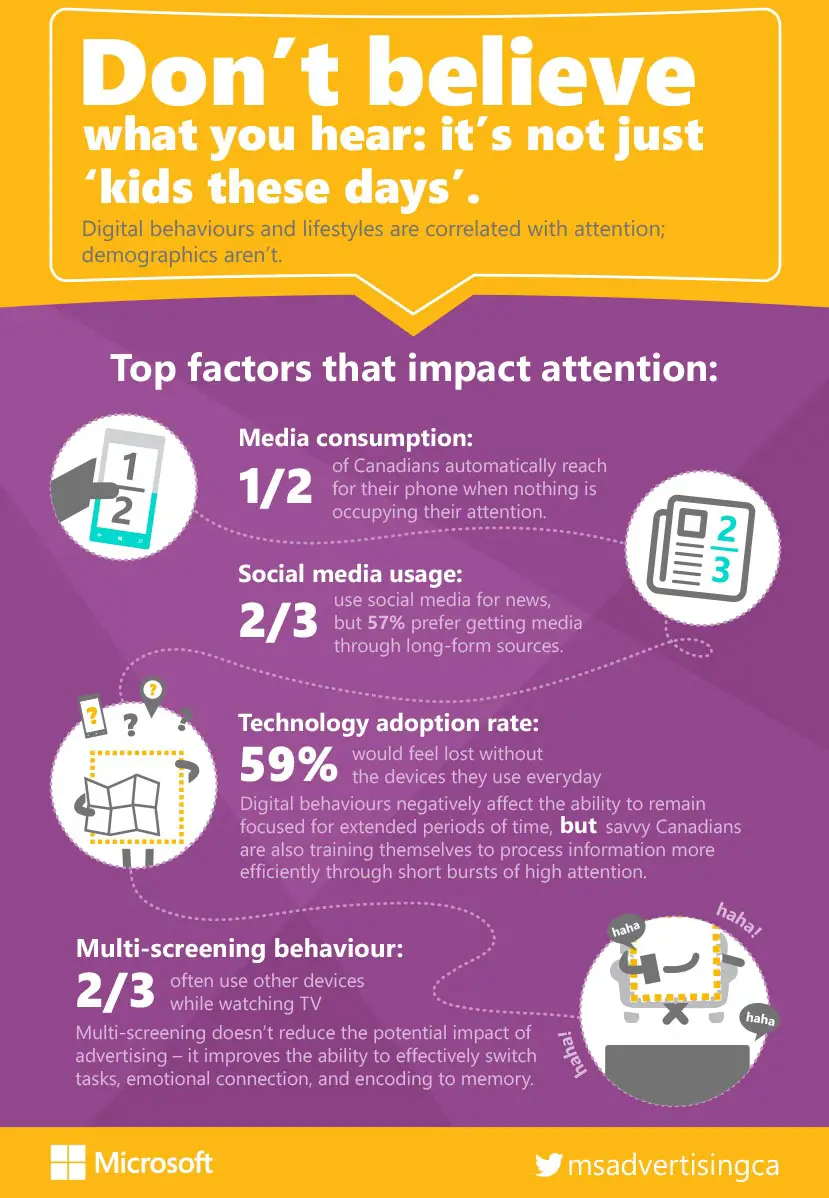A new study recently released by Microsoft Canada’s Consumer Insights division shows that the average human attention span is now shorter than that of a goldfish. In 2000, the average human attention span was 12 seconds, in 2013 it dropped to 8 seconds. A goldfish has an average attention span of 9 seconds. The cause? Increased media consumption and digital lifestyles. The research was completed with a marketing focus in mind, but the results can definitely be taken to show how the digital era has affected our lives.
While the study was conducted in Canada, the proliferation of digital devices and media is worldwide so it’s not a stretch to assume similar results in other countries.
“We are moving from a world where computing power was scarce to a place where it now is almost limitless, and where the true scarce commodity is increasingly human attention” – Satya Nadella
The study surveyed 2,000 individuals while using EEGs to study the brain activity of 112 other participants. The study broke attention down to three parts – sustained (prolonged focus), selective (avoiding distraction), and alternating (how efficiently task switching is handled). Sustained attention measured how well participants responded to patterns, selective attention to spotting differences, and alternating attention to different tasks such as classifying alternating numbers and letters.
While the full report is available at the source link below, some key results found that 44% of Canadians have to concentrate hard to stay focused – a number which rises as high as 68% for early tech adopters, heavy social media users, and those between the ages of 18-24. While 54% of Canadians said technology sometimes makes their lives worse, only 51% felt it was important to make time to unplug while only 39% actually disconnect from technology each month.

Reading numbers like that may seem like it’s all doom and gloom, but the introduction of “two screen” TV experiences and the increased number of people using other devices while watching TV (79% of 18-24 year olds and 42% of those 65 and older) has actually improved our ability to multitask. In fact, the study found that “multi-screen environments not only improve overall attention, they improve emotional connection and encoding to memory.”
The study (partially) summarizes by stating that:
In today’s connected age, digital media consumption is a given and Canadians are adapting to the massive amounts of information they’re exposed to every day. As the prevalence of multi-screening increases, social becomes integrated in different ways, and consumers continue to adopt new technologies, attention spans are decreasing overall. This is a universal truth, it’s NOT just ‘kids these days’.
Now for the good news: Canadians’ increasingly digital lifestyles are also making them more efficient at processing information and recording it to their memories. They’re able to do more with less, so that they can move on to the next new/exciting thing.
What do you think about Microsoft’s findings? Is the amount of time we spend with digital devices helpful or harmful? Let us know in the comments below, or on Google+, Twitter, or Facebook.
[button link=”http://advertising.microsoft.com/en/cl/31966/how-does-digital-affect-canadian-attention-spans” icon=”fa-external-link” side=”left” target=”blank” color=”285b5e” textcolor=”ffffff”]Source: Microsoft[/button]Last Updated on November 27, 2018.











Comments are closed.